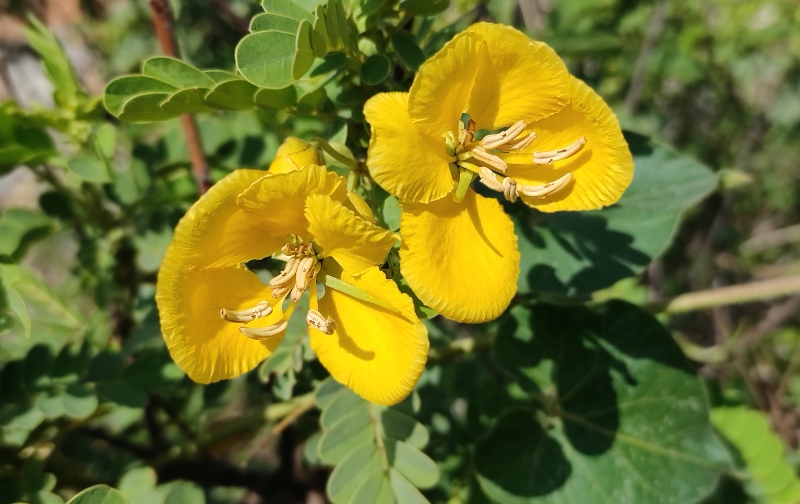
The partridge pea is a cute flowering plant that brings plenty of color to a flowerbed. It isn’t too finicky about its temperatures, and it can be grown in zones 3 through 9.
It begins blooming mid-summer and continues to bloom while going into fall. Many people cultivate these flowers because they attract bees and butterflies. The leaves are thin and delicate, reminiscent of fern fronds. The flowers are bright yellow and have red centers.
Light and Temperature Requirements
Partridge pea plants like full sunlight best, but they will generally tolerate being in partial shade. In shady areas, however, it will produce fewer flowers. The plant will tolerate a broad range of temperatures. Freezing temperatures actually help the seeds to open and germinate. In colder regions, they will die back in the winter, but they are self-seeding and will begin growing again in the spring.
Watering
When you first plant partridge pea, be sure to water it often to help it to establish itself. Once it has become established, it will not need much care. Unless there are drought conditions, it will not need you to water it. If you water it occasionally, be careful not to overwater it. It grows easily in the wild and needs very little human intervention.
Soil & Fertilizing
The partridge pea is a tough plant that can be grown in just about any soil type as long as there is good drainage. It can thrive in everything from clay to sandy loam. One reason that it will tolerate so many soil types is that it actually puts nitrogen into the soil and fixes it there. It does this by growing a taproot that will break down in the soil and give the soil extra organic matter. It’s much like creating its own compost. As a legume, its roots also add nitrogen to the soil. Since this plant fertilizes itself, it needs no fertilizer to be added to the soil.
Deadheading and Pruning
To keep your partridge pea blooming, deadhead the flowers once they wilt. When you deadhead this plant, it also keeps the plant from rampantly reseeding. This plant can be aggressive, and it will invade a space if allowed to do so. Deadheading can keep this in check. The plant can even fling seeds a good distance away to start new plants, so deadheading is important if you don’t want this plant to take over. Even with deadheading, you may need to clean up seedlings that can appear in your garden. The partridge pea does not need any pruning.
Growing From Seed
The best method of growing the partridge pea from seed is to sow it in the winter. The hard shell of the seeds can be cracked to let in water or simply planted in moist soil so that the cold temperatures in the winter will cause the seed shell to freeze and crack. Plant them about 1/4″ deep in the winter, and they will begin growing in the springtime.
If you want to manually plant the seeds, you will have to collect them first. In the late summer and early autumn, the plant will grow pea pods. When these turn brown, carefully remove them from the plant’s stalk. Be careful not to let the pods open up as you are collecting them. If the pods are twisted, it will fling the seeds far and wide. Use one hand to completely cover the pod when harvesting to ensure that there are no escapees.




